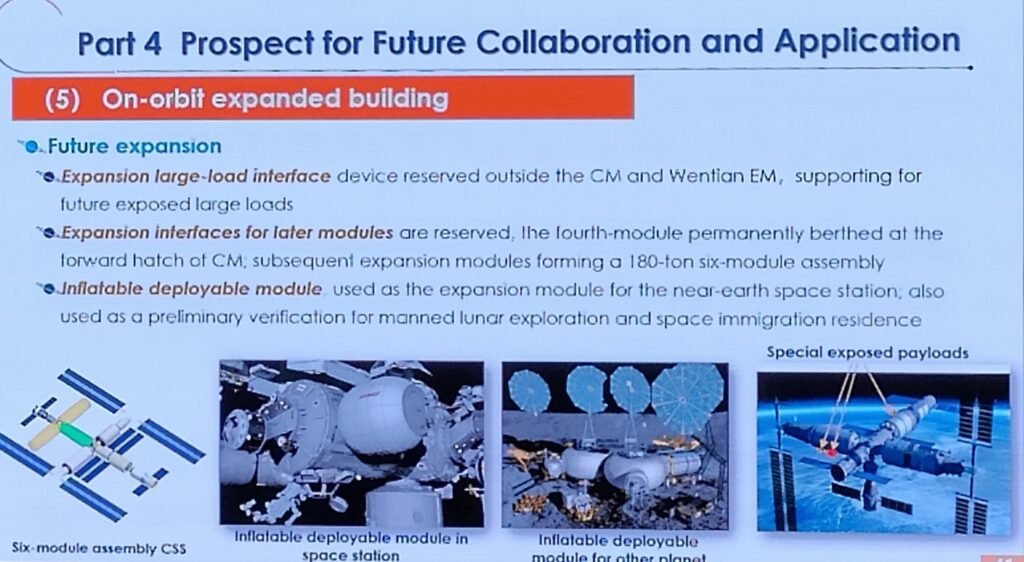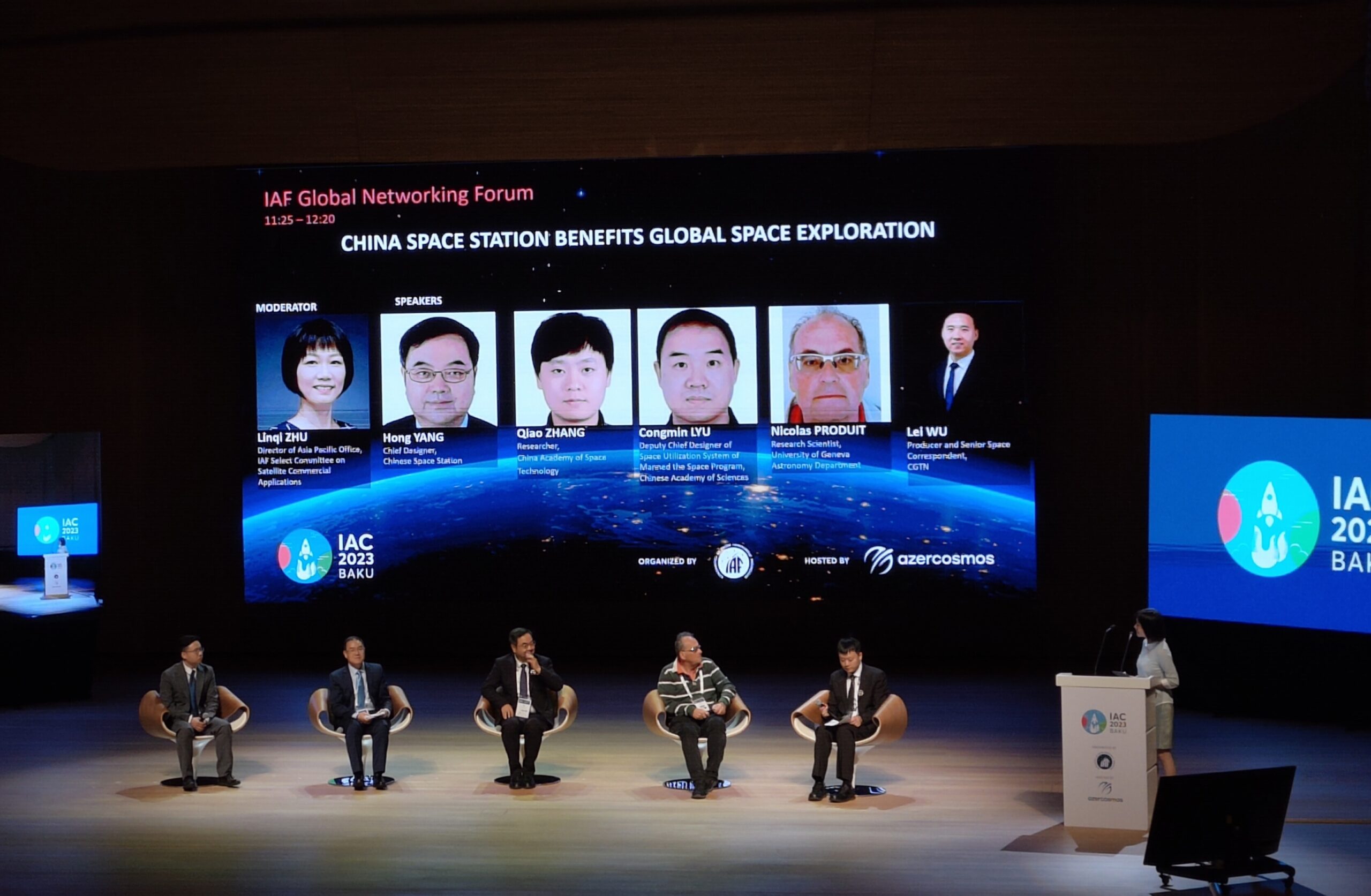BAKU, Azerbaijan — China will send new modules to its Tiangong space station in coming years to expand the outpost’s volume and capabilities.
Future plans for Tiangong were presented at the 47th International Astronautical Congress in Baku Oct. 4. Zhang Qiao of the China Academy of Space Technology (CAST) presented plans to expand Tiangong from three to six modules.
“We will build a 180 tons, six-module assembly in the future,” Zhang said. Tiangong currently has three modules, each with a mass of around 22 tons.
A multi-functional expansion module with six docking ports will first be launched in the coming years to allow this expansion. This will dock at the forward port of the Tianhe core module. Full size modules can then be added to Tiangong. SpaceNews understands that the timeline for such launches is around four years from now.
An expanded Tiangong would be just over a third of the mass of the roughly 450-metric-ton International Space Station (ISS). The first module for the ISS, Zarya, was launched in 1998. Partners in the program are seeking to maximize the use of the aging station through 2030.
Zhang also stated that expansion interfaces for Tianhe and the Wentian experiment module are being developed to host large external payloads.
Inflatable modules are also being developed. These will serve both as potential habitats and preliminary verification for crewed lunar exploration.

CAST is an arm of China’s state-owned main space contractor, CASC. The academy develops and manufactures spacecraft including the modules for Tiangong and would likely be involved in development of new modules.
The plan for the basic, three-module Tiangong (“Heavenly Palace”) was initially stated to be a lifetime in orbit of no less than 10 years.
A Hubble-class co-orbiting space telescope, named Xuntian, is planned to be launched around 2024. It will be able to dock with Tiangong for maintenance, repairs, refueling and upgrades.
Zhang’s presentation also noted that more spacecraft will “probably fly co-orbitally with CSS [Chinese space station] to receive on-orbit services.”
The CSS will gradually play an important role as a “space home port,” according to Zhang.
Other improvements planned for Tiangong include 3D printers and developing intelligent robots, upgrading connectivity and robotic arms, and developing a space debris observation, detection and warning system. A digital twin of the station will also be constructed.
The expansion of the station would come at a time when China is working on several other expensive and challenging space projects. These plans include sending its first astronauts to the moon before 2030, while also working to construct an International Lunar Research Station in the 2030s. China is also working on a Mars sample return mission. This will be a more simple mission in comparison to the NASA-ESA MSR project, yet will still be incredibly complex. The latter project meanwhile has come under budgetary scrutiny in the U.S.
The growing scope of China’s space activities reflects an apparent increase in resources for the space sector, but may also create potential logistical, technical or budgetary challenges.
Experiments and cooperation
Lyu Congming, deputy chief designer of Space Utilization System of China’s human spaceflight program, told the audience that more than 100 scientific research projects for Tiangong have been initiated. Of these, 65 have been implemented with 48 ongoing.
Lyu added that international cooperation through the United Nations Office for Outer Space Affairs (UNOOSA) has been carried out, with a first round of experiments already selected. A new round of calls for proposals is expected soon and periodically after this. Lyu also highlighted cooperation with the European Space Agency.
China’s human spaceflight agency, CMSEO, has been looking at opening Tiangong to various commercial purposes including tourism. It also recently selected four proposals to proceed to a detailed design study phase for developing low-cost supply missions to the space station.
The presentations Wednesday also stated numerous times that China is looking for cooperation of various types with Tiangong. This includes collaboration at the payload, technology and module levels.
CMSEO stated earlier this year that it was about to start selecting international astronauts to travel to the space station. No update on the process was provided.
